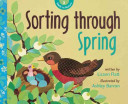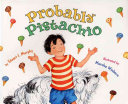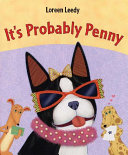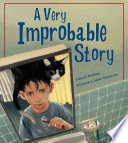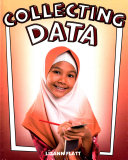Listed below are selected teacher resources, picture books, and non-fiction related to data management and probability.
Teacher Resources
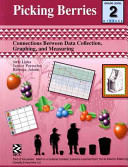 Picking berries: Connections between data collection, graphing, and measuring
Picking berries: Connections between data collection, graphing, and measuring
by Jerry Lipka et al.
Grades: 2-3
In this module, students engage in a series of hands-on activities that help them explore data, graphic representation and linear measuring. Students gather data related to the berry harvest to build and analyze tables and graphs, and they learn to read thermometers and measure the length of their shadows. The culture and math of this module connect through an engaging story of a family gathering berries at the end of summer. Part of the Math in a cultural context series.
 Salmon fishing: Investigations into probability
Salmon fishing: Investigations into probability
by Aishath Shehenaz Adam et al.
Grades: 6-7
Students use activities based on subsistence and commercial fishing in southwest Alaska to investigate various topics related to probability, such as experimental and theoretical probability, the law of large numbers, sample space and equally and unequally likely events. The module consists of nine activities, with each activity including an introduction, goals, materials used, preparation needed before class, vocabulary and instructions. Part of the Math in a cultural context series.
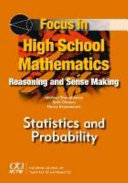 Focus in high school mathematics: Reasoning and sense making in statistics and probability
Focus in high school mathematics: Reasoning and sense making in statistics and probability
by Michael Shaughnessy et al.
Grades: 9-12
Reasoning about and making sense of statistics and probability are essential to students’ future success. This books presents six investigations to illustrate how to help high school students develop their skills in working with data. The investigations emphasize the roles of reasoning and sense making in defining a statistical question and collecting, analyzing and interpreting data to answer it.
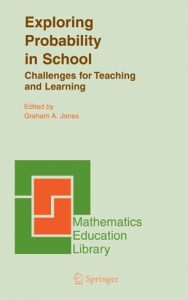 Exploring probability in school: Challenges for teaching and learning
Exploring probability in school: Challenges for teaching and learning
edited by Graham A. Jones
Grades: K-12
This book provides a new perspective into research on the teaching and learning of probability by recognizing and analyzing the special challenges faced by teachers and learners in contemporary classrooms. The chapters discuss the nature of probability, look at the meaning of probabilistic literacy, and examine student access to powerful ideas in probability during the elementary, middle, and high school years. (E-book only)
Picture Books
written by Lizann Flatt, illustrated by Ashley Barron
What if animals and plants knew math, just like us? Would flowers bloom in patterns? Would raindrops fall in rhythm? Would birds balance evenly on branches? In this book, nature comes to life to help children grasp concepts of patterning, sorting, data management, and probability.
written by Stuart J. Murphy, illustrated by Marsha Winborn
Nothing goes right for Jack all day long. He can’t find his favorite sneakers, he spills milk on his math homework, and worst of all, he gets tuna fish for lunch. Maybe, just maybe, pistachio ice cream for dessert will do the trick. But how likely is it to happen?
by Loreen Leedy
Lisa’s class is learning about probability. For part of her homework, she has to think of an event that will happen, one that might happen, and one that can’t happen. Who is that Boston terrier that keeps popping into Lisa’s imagination? It’s probably Penny!
written by Edward Einhorn, illustrated by Adam Gustavson
Ethan wakes up one morning to find a cat stuck on his head. The cat, Odds, won’t budge until Ethan wins a game of probability. Without looking, Ethan must pick out a dime from his coin collection or two matching socks from his dresser, or do something else improbable. If he doesn’t, Odds is there to stay, and Ethan has a 100% chance of missing his big soccer game.
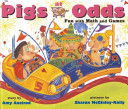 Pigs at odds: Fun with math and games
Pigs at odds: Fun with math and games
written by Amy Axelrod, illustrated by Sharon McGinley-Nally
While trying their luck at various games at the county fair, members of the Pig family find out what the odds are that they will go home as winners. No matter how many times Mr. Pig tries to win, the odds seem to be against him. Will his luck ever change?
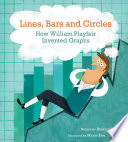 Lines, bars and circles: How William Playfair invented graphs
Lines, bars and circles: How William Playfair invented graphs
written by Helaine Becker, illustrated by Marie-Ève Tremblay
Born in Scotland more than 250 years ago, William Playfair saw the world differently from other people. While writing a book about economics, Will’s innovative vision inspired an idea that would set him apart: he created the first modern line graph. Next came a bar graph and later a pie chart. These infographic inventions provided a way for numbers to be seen as pictures, and changed the way the world would interact with data forever.
Non-Fiction
by Lizann Flett
Grades: 1-3
With fun and engaging activities, this book outlines the steps to properly gathering and organizing data, which include observation, assessing the reliability of sources, and critically assessing data in order to draw reliable conclusions. Part of the Get graphing! Building data literacy skills series.
Finding More Resources
To find more resources in this area, try the following:
- Search using the General tab on the UBC Library website to look for material in all UBC Library branches.
- Search using “Search Education Resources” box in the left hand bar on the Education Library website to limit your results to materials in the Education Library.
- Use specific search terms to narrow your results, such as “mathematics–juvenile literature”, “probabilities–study and teaching”, “probabilities–juvenile literature” or “mathematical statistics–study and teaching”.
- To find lesson plans, include “lesson plans”, “lesson planning”, or “activity programs” in your search terms.
For more help with searching, please visit the Library Service Desk or e-mail ed.lib@ubc.ca.

